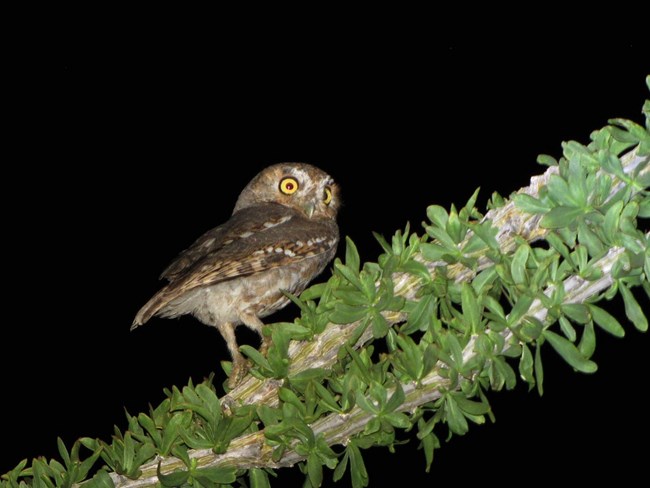|
When was the last time you looked at the stars? An uninterrupted night sky is something that is becoming increasingly rarer to encounter. Saguaro National Park is a destination for dark and starry skies. In 2023, the International Dark Sky Association certified Saguaro National Park as an Urban Night Sky Place—only the ninth in the world and the second in the National Park system! Learn more about Saguaro's certification by reading our news release. 
NPS Photo Why Protect the Night Sky?By preserving darkness in the park, we are also preserving the livelihood of the ecosystem. All kinds of life rely on the natural cycle of light and dark. This circadium rhythm governs life-sustaining behaviors such as hunting, reproduction, sleep, and protection from predators. 
NPS Photo Light PollutionLight pollution refers to human-made light that alters or disrupts natural light. If you are in an urban area, you will notice the affects of light pollution as a glow that grows up from the horizon. As bright lights disperse past the atmosphere, they drown out the light from distant stars int he sky. Light pollution has only become an issue within the last 125 years with the invention of the light bulb. Light pollution is easy to see at night, and it is especially prevalent in urban areas. Light pollution affects wildlife, ecosystems, human health and climate change. Life at Night"Half the park is after dark" What Can You Do?Unlike other forms of pollution, light pollution is reversible. Most light pollution is caused by bad lighting fixtures and with a few simple steps, light pollution can be drastically decreased.
Night skies with NPSStargazing at SaguaroLooking to experience the starry nights in the park? Both districts offer a number of locations you can visit to celebrate the night sky. While many of the park's trails are not accessible after the gates close at 8 pm, winters in the Sonoran Desert offer hours of darkness before the night gets late. Rincon Mountain DistrictCactus Forest Drive: Take a cruise on this 8-mile scenic loop drive! As you go, there are multiple overlooks and pullouts along the way where you can park to admire the stars. Tucson Mountain DistrictBajada Loop Drive: Walking along this 5-mile, unpaved route, at night will give you access to wonderful views with scenic views and picnic areas to stop at along the way (The loop drive is closed to vehicles from dusk to dawn). Visitors may also walk down the Golden Gate Multi-Use Trail starting from the pullout along Picture Rocks Rd. Dark Sky EventsSaguaro National Park offers a number of dark sky programs such as star parties and night hikes. Check out our calendar for a full list of events. |
Last updated: April 4, 2025
